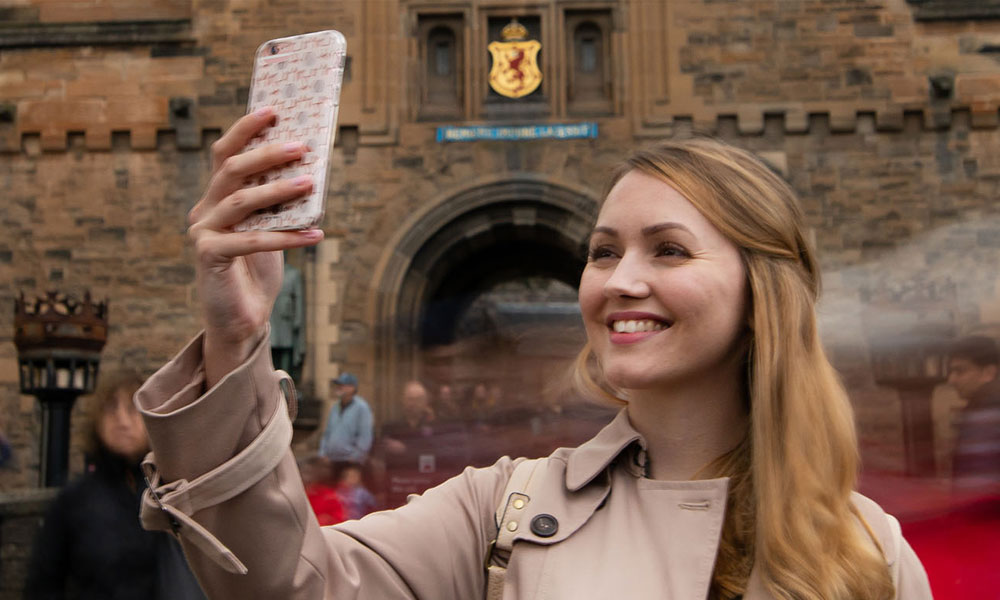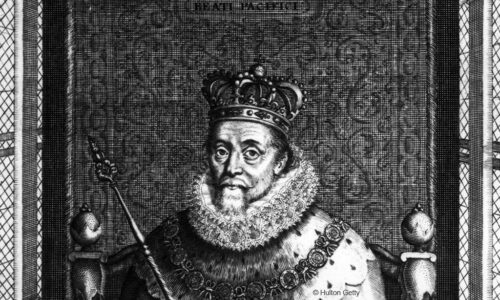
King James VI: The Return of the King
15 May 2023
On 24 March 1603, King James VI of Scotland ascended to the English throne as King James I and his descendants still sit on the British throne today.
The Union of the Crowns took place during his reign. His writings exacerbated Scotland’s witch hunts. The King James Bible was commissioned by him. The gunpowder plot targeted him. And today many historians now agree that he was free with his romantic affections, which is likely to have included very close relationships with three men.
But who was King James and how did this Scottish king accede to the English throne?
The Thistle and the Rose
One hundred years previously, in 1503, the pivotal marriage between the ‘Thistle and the Rose’ took place. The illustrious marriage was between King James IV of Scotland and his bride Margaret Tudor.

Portrait of Margaret Tudor and the Duke of Albany.
Their union was celebrated for fostering a time of renewed, yet short, peace between Scotland and England. Margaret was the eldest daughter of Henry VII of England, Lord of Ireland. She was also the older sister of the future King Henry VIII. This union therefore provided a direct bloodline to both the Scottish and English thrones.
The Royal Birthing Room
After the untimely death of James and Margaret’s son, James V, the Scottish throne passed to their granddaughter Mary, Queen of Scots.
Upon returning from France, Mary spent six years of her reign living at Holyrood Palace and other residences. It was at Holyrood that she began her disastrous marriage to Henry Stuart, Lord Darnley. Soon, relations between the couple deteriorated. After the murder of her private secretary Rizzio, the heavily pregnant Mary eventually fled to Edinburgh Castle for protection.

The Royal Birthing Room.
It was here on 19 June 1566 that Mary gave birth to her son, the future king, James VI of Scotland. The small chamber where James was born is located in the palace block and is open to visitors of the castle.
Ascension to the English Throne
After the death of Henry VIII, the English throne firstly passed to his only son, Edward VI (1547-1553); his eldest daughter Mary (1553-1558); and finally to his younger daughter Queen Elizabeth I. Not one of these monarchs produced an heir. This made their Scottish cousins the closest blood relatives in the line of succession.
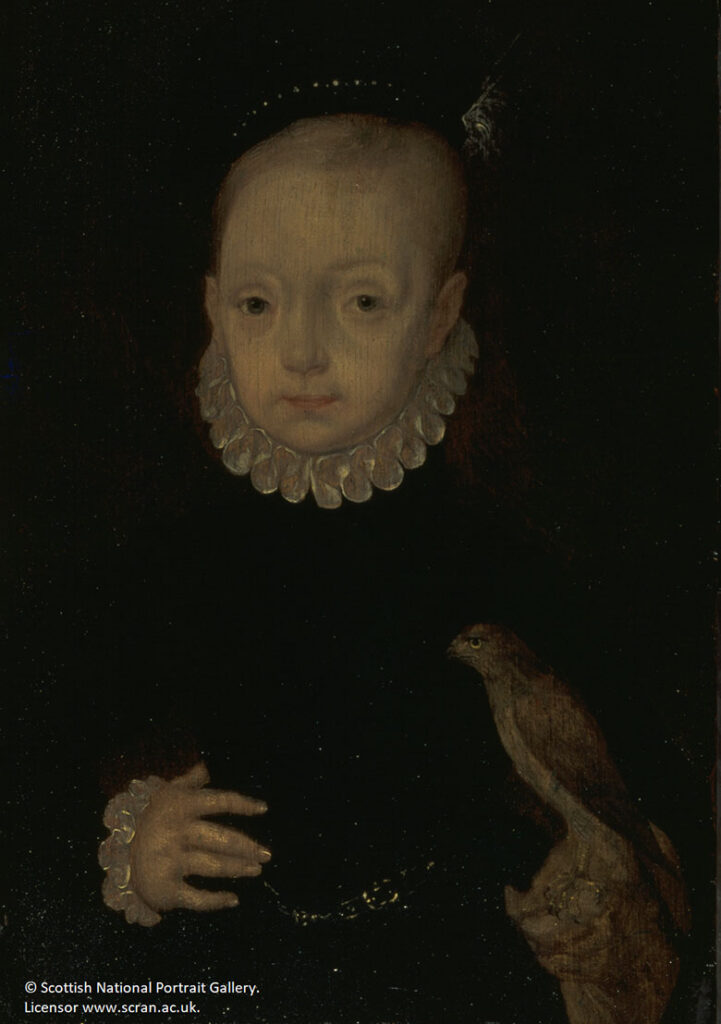
Portrait of the infant James VI.
James VI had inherited the Scottish throne at the age of thirteen months, after the forced abdication of his mother. The execution of Mary, Queen of Scots, left James as the closest relative of Queen Elizabeth I.
Both Scotland and England were officially Protestant at this point in time, so James was raised Protestant by his custodians. However, both countries had been suffering repercussions from the reformations. Much instability had been caused through bitter feud. England also suffered from the alternating religious policies of successive monarchs. The Catholic Mary, Queen of Scots had been seen as a threat by the Protestant Elizabeth. This ultimately led to Mary’s execution. Correspondence between the Scottish and English monarchs continued for many years. Shortly before her death, Elizabeth named James as her heir.
Queen Elizabeth died on the morning of 24 March 1603 at Richmond Palace. Her ambassador Sir Robert Carey mounted his horse around noon and galloped to Edinburgh. He stopped at Doncaster and Widdrington overnight, changing horses along the way. He finally arrived on the evening of 26 March.
On arrival he was taken to the king’s bedchamber where he knelt to proclaim James as ‘King of England, Scotland, France and Ireland’.
On 3 April James attended church, then bade farewell to his Scottish subjects. He promised not to forget the land of his birth and pledging to visit every three years. James then began his journey to London. He was warmly cheered along the way and further increased his popularity with some by bestowing over 900 knighthoods to both English and Scottish favourites before the summer was over.
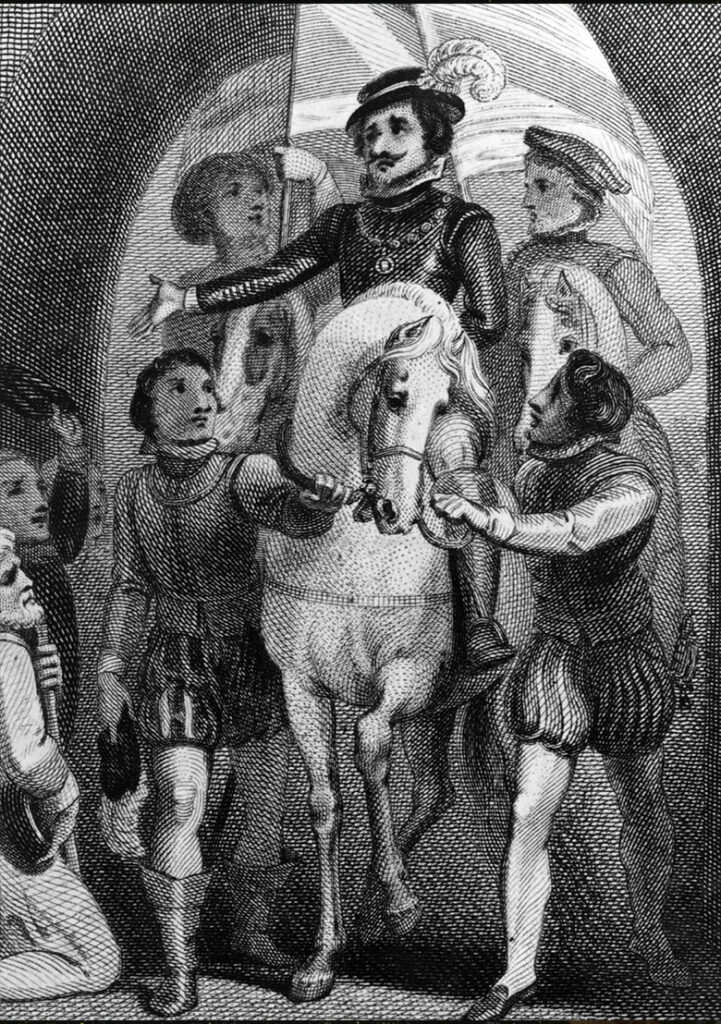
James VI, King of Scots, entering England to become King James I of England. © Hulton Getty. Licensor www.scran.ac.uk.
The Stone of Destiny
James’s coronation as the King of England took place on 25 July at Westminster Abbey. He was crowned on the coronation chair, containing the Stone of Destiny.
The Stone of Destiny, or Stone of Scone, is one of the most ancient and revered symbols of Scottish monarchy. In 1296 it had been seized and taken to London by Edward I of England. It was then incorporated into the coronation of English monarchs.
When James was crowned King of England, he became the first Scottish monarch to be crowned on it since John Balliol in 1292.
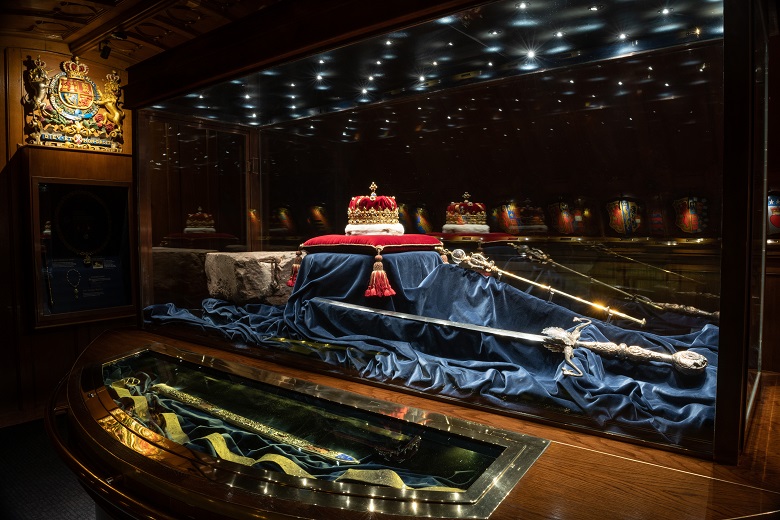
The King’s Return to Scotland
James didn’t keep his promise every three years. It was March 1617 before he began his journey back to Scotland. The visit was designed to coincide with his 50th year as King of Scotland and the Scots were jubilant at his return despite the tax increase introduced to help cover costs.
Orders went out to restore the monarch’s residences and Edinburgh Castle was decorated to celebrate the anniversary and remember the King’s birth. The small birthing room was adorned with James’ date of birth and the adjacent ante-chamber and Laich Hall were lavishly moulded and decorated with coats of arms and genealogy to reflect the importance of the Scottish king.

The doorway leading from Crown Square to the birth chamber, decorated with James VI’s year of birth.
James spent the night of his birthday at the castle but remained mostly at Holyrood Palace with trips to some of the larger towns and cities of his homeland. He finally left Scotland in August 1617 for the last time.
Blessed are the Peacemakers
James was a well-educated and intelligent man but did not always use his talents. The French King called him ‘the wisest fool in Christendom’. He spoke many languages fluently. His ability was noted at a young age for translating the Bible from Latin to French and then English with ease. He is also responsible for authorising the King James Version of the Bible, which brought uniformity to the differing and uncertain translations used across the country.
Ultimately King James VI and I considered himself an advocate for peace. His motto was ‘Blessed are the Peacemakers’ though not everyone throughout England and Scotland may have agreed with it.
James VI and I at the Castle
If you are visiting the castle today, you can see where King James VI and I was born. The birth chamber and Laich Hall display the connection to the King who united the British crowns.

The Laich Hall at the castle.
This blog was contributed by Castle Guide Mae.
Banner image credit: © Hulton Getty. Licensor www.scran.ac.uk.
